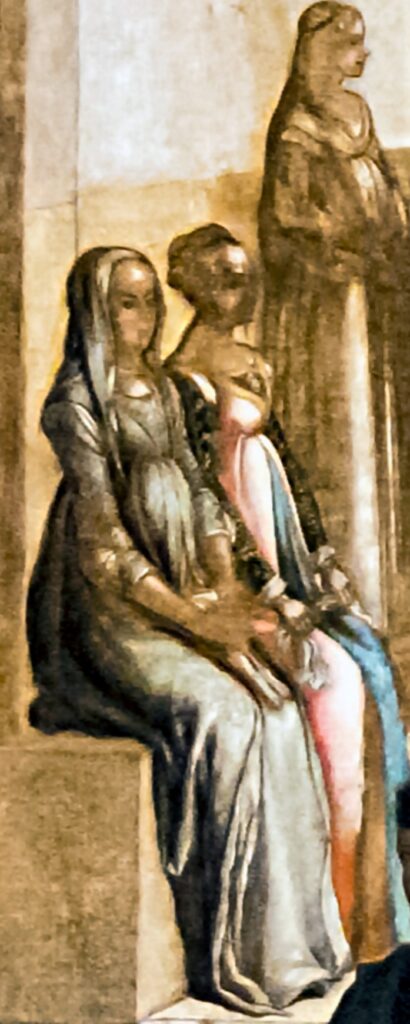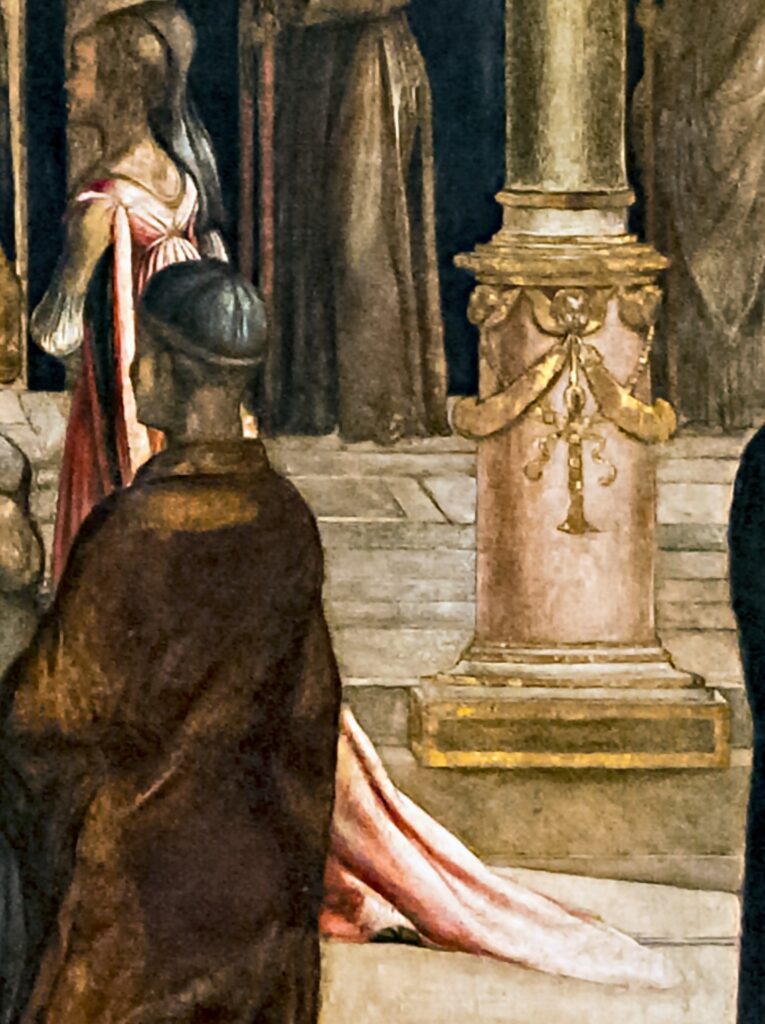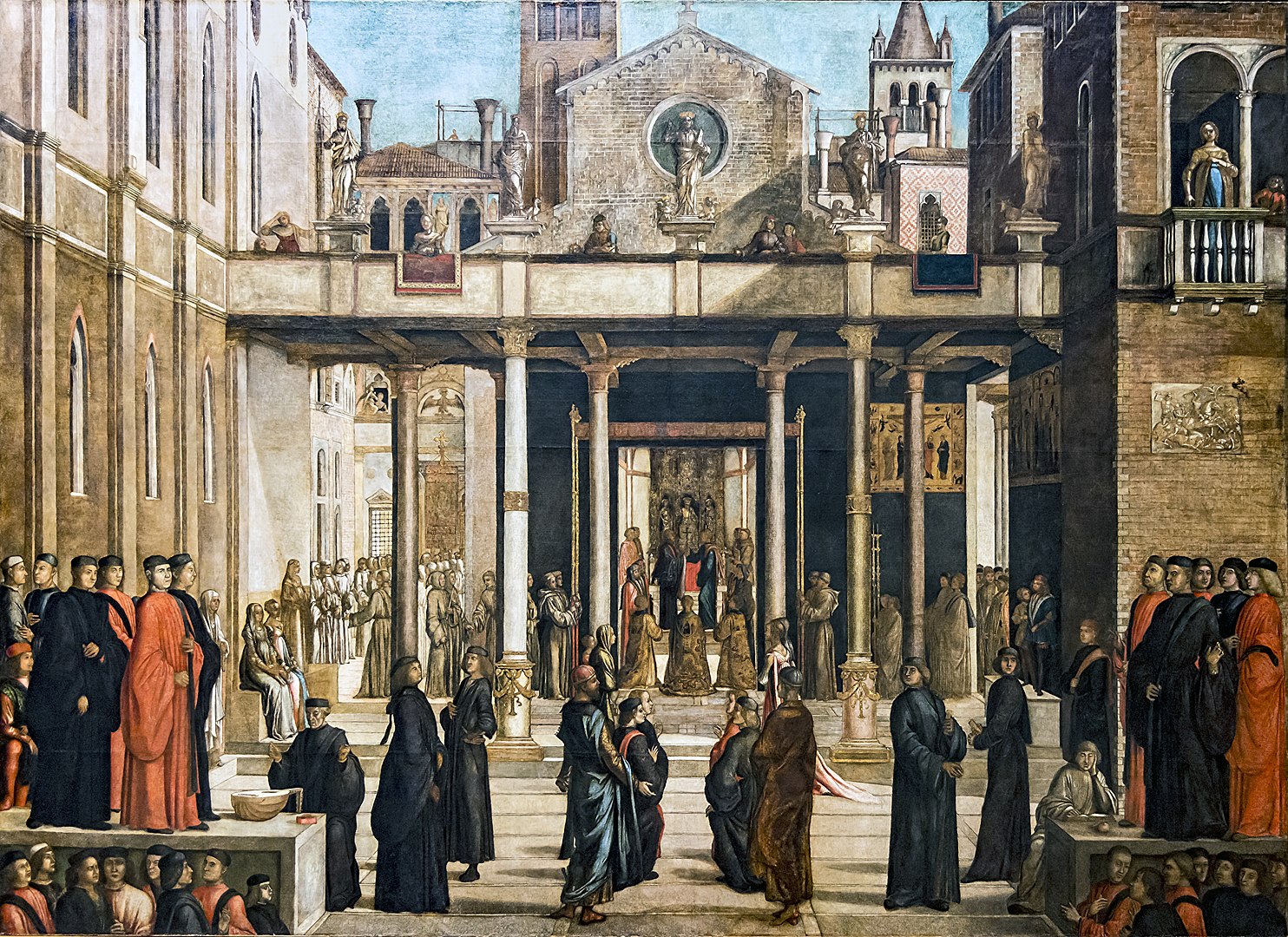By Didier Descouens – Own work, Public Domain, https://commons.wikimedia.org/w/index.php?curid=59748820
Creative Commons License Info
The Relic of the Holy Cross is offered to the Scuola Grande di San Giovanni Evangelista was painted by Lazzaro Bastiani. The painting dates from 1494. The painting is currently housed at Gallerie dell’Accademia.
The two seated figures in the background towards the left side of the painting both show the high waist, wide oval near-to-off-the-shoulder neckline, and the sleeves are tied on as you can tell by the poofs of white body linen shown at the shoulders. The nearest figure wears a veil over her hair while her partner seated next to her, wears her hair up, probably taped in a crown, sans veil. The near figure has ¾ length sleeves with a wide arc cut at the elbow. Her seated companion has wrist-length sleeves with the body linen turned up at the cuffs. The younger woman standing at the side wears her hair down indicating youth and unmarried status, and even though she is clearly indicated as being a youth, her gown still gives the ‘pregnant silhouette’. The front-most seated woman wears a mostly monochromatic palette; in contrast, the woman sitting beside her wears no less than three colors– the blue underdress, the black patterned sleeves, and the pink overdress with gold trim. The standing youth is in shadow but is clearly wearing an overdress over an underdress with a high belt.


In a rare instance in Venetian art, we have a woman in the front center of the painting, though in the background in a public, outdoor scene. She is wearing an underdress as well as an overdress with a significant train that comes to a V point. She is not wearing a veil though her hair is bound up with a band or taping. She is accompanied by a chaperon that does wear a veil. Her sleeves are tied on as can be deduced from the white body linen showing at the shoulder. Her possibly 2 part sleeves are gapped at the elbow and the body linen is pulled through. The overdress is a pleated style with a deep V back which meets a raised waistline at the center back. Her hanging sleeves seem to be long enough to hit the ground and pull as they do not hang straight to the ground in this painting.
The final female figure of note in this painting is the woman on the balcony at the top right of the painting. You can see her hair is up and taped or contained in a band. Her face is framed with curls on either side of center part. She is wearing an underdress of blue with gold trim at the neck. The overdress is gold with a different gold trim at the neck. Her sleeves match the overdress but are only ¾ in length. The sleeves are most likely of a flat construction that close at the forearm. She is also obviously wearing chopines.


